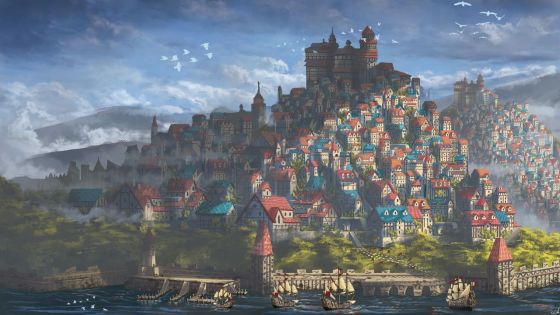Difference between revisions of "City"
Tao alexis (talk | contribs) |
Tao alexis (talk | contribs) |
||
| Line 7: | Line 7: | ||
== Structure == | == Structure == | ||
| + | Physically, the city is a complex organism designed to draw in sufficient supplies and resources for its people, their needs and the needs of manufacturing, so that finished goods can be made, collected and shipped elsewhere. Meanwhile, the workers need to be housed, along with those in the city that provide vital services — such as maintaining order, keeping accounts, ensuring sanitation and eliminating vermin, the collection of gong, protecting the city from outsiders and governing the population. Thus the city operates like a tremendous valve, breathing in materials, breathing out valuable goods, which sustains the economy and welfare of the inhabitants. This is naturally a simplistic description, with the needs of different cities with different climes, cultures and geographies varying to a wide degree. Nevertheless, it serves as a model from which deviations can be determined and designed. | ||
| + | |||
| + | ==== Yards ==== | ||
| + | These are extensive areas for the loading and unloading of goods, most importantly foodstuffs, livestock, building materials, textile fibres, timber and mineral ores. These are carried in along overland roads or unloaded from ships at a "dockyard," or quay (pronounced "key"). Whereas some products can be left exposed to the elements, such as animals and stone, others must be protected so as to avoid rot and spoilage. Thus, enormous outdoor spaces are relegated as "stockyards," while separate from these are enormous sheds constructed of minimal framework to protect huge bales of wool or cotton, sawn lumber, boxes of ceramics or glass packed in straw along with enormous collections of fruits, vegetables or treenuts. Valuable goods, like perfume, paint, dyes, cloth, beer, wine and so on are more carefully stored in strong, well-built structures surrounded by guards. Enormous granaries store mountains of grain and animal feed. | ||
Revision as of 01:58, 18 October 2021
Cities are large humanoid settlements that develop organically from towns whose access to abundant water and food sources are matched by geographical access to resources, practical trade routes, navigable waters and stable political environments. The largest cities will possess rare conditions, such as the sole access to large natural harbours, it's location as a trading gateway and their development as centers of spiritual or intellectual thinking.
Constantinople, one of the largest cities in the world, has an excellent harbour, powerful defensive capabilities, stands astride two of the world's most important trade routes and for more than a thousand years, acted as one of the world's great religious centers. Today, it is the political center of the vast Ottoman Empire. Due to its inherent characteristics, it's dominance as a city was inevitable.
In one degree or another, all cities, even the smallest, possess similar characteristics — they occur and thrive in those locations in the world suited to an expansion of population, political purpose and commerce. As a rule of thumb, a city is a settlement with 5,000 or more inhabitants.
Structure
Physically, the city is a complex organism designed to draw in sufficient supplies and resources for its people, their needs and the needs of manufacturing, so that finished goods can be made, collected and shipped elsewhere. Meanwhile, the workers need to be housed, along with those in the city that provide vital services — such as maintaining order, keeping accounts, ensuring sanitation and eliminating vermin, the collection of gong, protecting the city from outsiders and governing the population. Thus the city operates like a tremendous valve, breathing in materials, breathing out valuable goods, which sustains the economy and welfare of the inhabitants. This is naturally a simplistic description, with the needs of different cities with different climes, cultures and geographies varying to a wide degree. Nevertheless, it serves as a model from which deviations can be determined and designed.
Yards
These are extensive areas for the loading and unloading of goods, most importantly foodstuffs, livestock, building materials, textile fibres, timber and mineral ores. These are carried in along overland roads or unloaded from ships at a "dockyard," or quay (pronounced "key"). Whereas some products can be left exposed to the elements, such as animals and stone, others must be protected so as to avoid rot and spoilage. Thus, enormous outdoor spaces are relegated as "stockyards," while separate from these are enormous sheds constructed of minimal framework to protect huge bales of wool or cotton, sawn lumber, boxes of ceramics or glass packed in straw along with enormous collections of fruits, vegetables or treenuts. Valuable goods, like perfume, paint, dyes, cloth, beer, wine and so on are more carefully stored in strong, well-built structures surrounded by guards. Enormous granaries store mountains of grain and animal feed.
